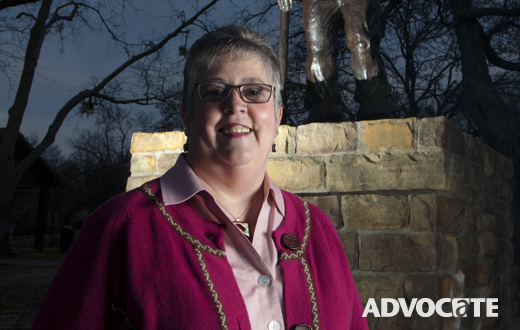She is a coordinator for the Dallas Park and Recreation Department’s planning, design and construction division, but Lake Highlands resident Sally Rodriguez is also, unofficially, the department’s historian. It’s a job she stumbled upon, much like she did the hundreds of aerial photos and historical renderings unearthed over the years as Rodriguez has combed through closets and file cabinets. Two years ago, she compiled her White Rock Lake finds into a book, and for the next few months, Rodriguez will share further historical images of neighborhood parks and recreation centers in the pages of the Advocate.
Did you play in Dallas parks as a child?
I grew up in the L Streets, and McCree Park was just across Plano Road. I probably spent more time in the creek than actually in the park. I also spent a lot of time running around Flag Pole Hill through the cedar trees with my friends, as most kids probably do.
You managed rec centers and parks for years before moving to city hall in 2001. At what point did you become the department’s historian?
What I tell people is the first year I was here, I was in a position no one had ever had before, so besides learning the trade, I started looking in closets. It’s amazing what you can find in closets. I was looking for something in the large flat files. That’s where they have all the plans laid out flat on large pieces of paper. As I was digging through, I found a very large aerial of White Rock Lake from 1942. No one had ever seen it. Some of it is just finding things people had forgotten were in the files. I was looking for something in Hamilton Park, and I found a hand-colored rendering of the pavilion there that is now being restored. That still happens — I’m going for one thing, and then I end up finding something else.
Do you dig constantly?
I work with the architects in the back as they do restoration projects, and I go and find backup material for them. One of the things that everybody in the back knew about was these aerial photos. The first Christmas I was here, when it was really quiet, I found a three-drawer file cabinet full of aerial photos. They were used by the park planners, put in plastic sleeves and drawn on, very much like today’s planners use GIS [geographic information systems] on the computer. But what the aerial photos do is tell stories of communities as they develop.
Do you have a favorite part of Dallas park history?
My favorite topic is White Rock and the Civilian Conservation Corps [CCC]. After having attended several reunions of those alumni, I have a very soft place in my heart for them. The history of our country passed through them. Most of them were poor, the Depression hit them very hard, and this was one of those ways out. A lot of them got the education they needed, the training they needed, and a lot of them then went into World War II. I have met a lot of three-Cers who were also Pearl Harbor survivors, and if you go to our state and national parks and look at the work they did, it’s still around and it’s still very meaningful. You know, there’s just not very many municipal parks that have CCC work in them. It’s mostly state and national parks. So we have a real treasure in that we have a lot of structures at White Rock.
Your favorite park is White Rock, I assume?
Yes. It’s part of everybody’s story. I remember the first time I took my daughter to ride bikes around the lake. I remember “submarine races” — for anybody my age or older, that’s what we called parking at the lake. I learn stuff when I got out and do presentations, like the number of people who met their sweethearts at White Rock. The history of White Rock kind of transects people’s lives if they grew up in the area, and that’s why White Rock is so beloved.
• PHOTOS: View aerial photos Rodriguez uncovered of Lake Highlands North Park from the ’60s and ’70s.






